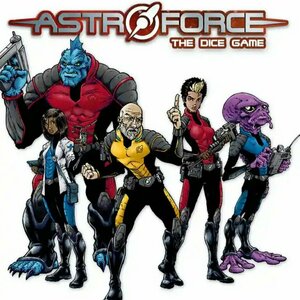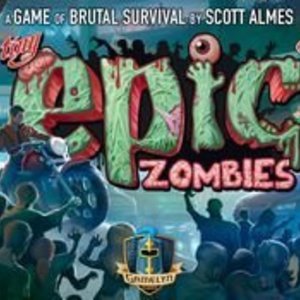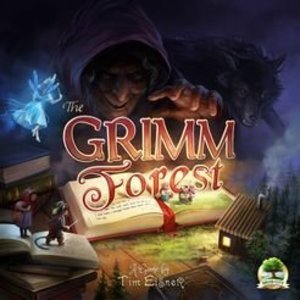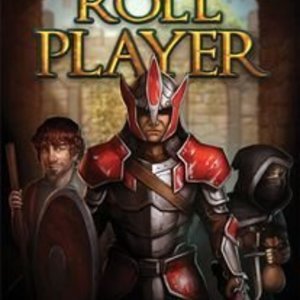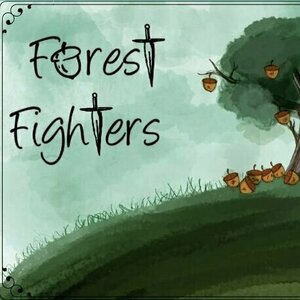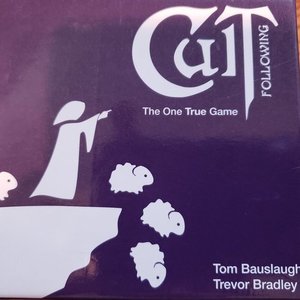Search
Search results
Peter Shephard (2822 KP) rated Astroforce: The Dice Game in Tabletop Games
May 6, 2021
"Astroforce: The Dice Game is a reimplementation of Carl White's award winning print and play game: Star Trek: The Dice Game."
But it is much more than just that. The rules are simple, the gameplay is diverse, and it is actually challenging! As with many Dice roller games, there is an element of luck, but there is also a huge element of strategy - do you want to tie a Die up for a few turns to unlock a special ability, or will that one die make or break your next turn?
You decide your difficulty level, whether its a 3 or 5 year mission, and head to the stars. Your FtL fuel is preset by the mission/ease, and if you fail to complete the mission in that many turns, you fail! Failure is bad, but it is a learning curve.
My only minor issue is that the markers for completing the missions' tasks are slightly too large for the text (or the text is slightly too small). It would also have been awesome to have 2/3 layer card ships (to prevent Dice running away), but its not critical.
But it is much more than just that. The rules are simple, the gameplay is diverse, and it is actually challenging! As with many Dice roller games, there is an element of luck, but there is also a huge element of strategy - do you want to tie a Die up for a few turns to unlock a special ability, or will that one die make or break your next turn?
You decide your difficulty level, whether its a 3 or 5 year mission, and head to the stars. Your FtL fuel is preset by the mission/ease, and if you fail to complete the mission in that many turns, you fail! Failure is bad, but it is a learning curve.
My only minor issue is that the markers for completing the missions' tasks are slightly too large for the text (or the text is slightly too small). It would also have been awesome to have 2/3 layer card ships (to prevent Dice running away), but its not critical.
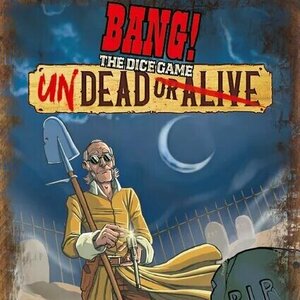
BANG! The Dice Game: Undead or Alive
Tabletop Game
BANG! The Dice Game: Undead or Alive includes five "modules" for BANG! The Dice Game that can be...
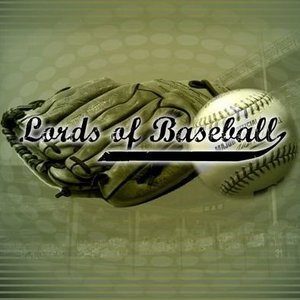
Lords of Baseball
Tabletop Game
The game of baseball has been played for many years in many forms. The term "Lords of Baseball"...
BoardGames 2018Games BaseballGames SportsGames
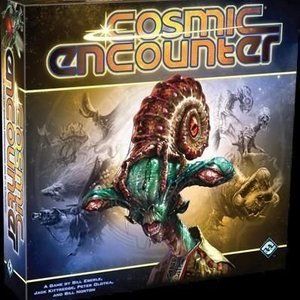
Cosmic Encounter
Tabletop Game
Build a galactic empire... In the depths of space, the alien races of the Cosmos vie with each other...
Boardgames GroupGames SpaceBattlegames
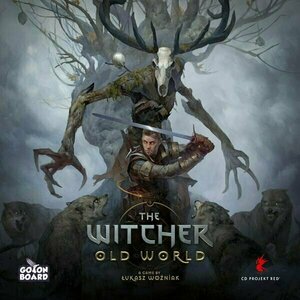
The Witcher: Old World
Tabletop Game
In The Witcher: Old World, you become a witcher — a professional monster slayer — and immerse...
Purple Phoenix Games (2266 KP) rated Tiny Epic Zombies in Tabletop Games
Jun 12, 2019
Who doesn’t love a day at the mall? Hanging out with friends, hitting the food court, checking out the sales at your favorite stores, trying to survive a zombie apocalypse, the possibilities are endless! Wait, what? Zombie apocalypse? Definitely NOT what you had in mind when you planned your trip to the mall, but it looks like you’re caught in the midst! The stores are in disarray and the mall is a mass of chaos (picture Black Friday shopping), and you need to get out! You and a band of survivors must fend off a hoard of zombies while collecting supplies and completing communal objectives in order to make it out alive!
Our next Tiny Epic game review brings us to the world of Zombies! Travis and I kickstarted this game last year, and it’s been a unique addition to the Tiny Epic series. Don’t let the adorable zombies fool you – the game requires a good amount of teamwork and strategy to be successful! And it can be played either cooperatively or competitively – a choice that I have not seen executed in a game before. So read on, fellow gamers, to decide if you have what it takes to survive this zombie infestation alive!
Disclaimer: There are 5 different game modes for Tiny Epic Zombies, but we have only played the completely Cooperative Game vs. an AI Zombie player. Once we have played the other game modes, we will either amend this review or write a new one! – L
Welcome to Tiny Epic Zombies – a cooperative game in which players must successfully complete 3 objectives before they are overrun by zombies. Players take on the role of mall-goers (each with a special ability) who have thus far survived the zombie outbreak. Players will move throughout the mall, battling zombies and picking up supplies, while working towards completing communal objectives. If all 3 objectives are completed, the players win! If the Search Deck runs out, or if the zombies take control of the courtyard and its remaining survivors, the players have lost the game.
For such a ‘tiny’ game, there really is a lot going on. Each player’s turn consists of 3 moves, after each of which the player may A) kill a zombie, B) use room abilities and/or interact with tokens, and C) collect items. It is important to note, players may only perform the B and C actions if there are no zombies remaining in any room of their current store. At the end of their turn, the player will reveal their Search Card (drawn blindly), and will add zombies to the mall accordingly. After zombies are added, the player blindly draws a new Search Card, and play continues. If the Search Deck runs out at any point in the game, players get one final turn to complete their objectives, otherwise they lose!
Simple, right? Not exactly. I know for me, personally, it can be hard to keep track of my turns since each of your 3 moves could potentially allow you to perform 3 additional actions. Turns can get a little muddled with so much to do if you are not paying close attention. After a few plays, it gets easier to remember the turn order, but even then I still keep the rule book on hand to double-check all of my turns.
Ultimately, the thing that can make or break a game is what objectives the players are trying to complete. You shuffle, randomly draw 3 objectives, and go from there. Some objectives are pretty involved and require lots of action to complete, while others are pretty straight-forward and simple. If you draw 3 tough ones (like we did in our first game together), it could be very difficult to succeed. The right combination of objectives can make the game super fun, but unless you hand-pick them for a balanced game, there’s always the chance you’ll get the hardest ones at once. Regarding the objectives though, I do really like that this game can be cooperative – everyone must pitch in to help, and no single player is the ‘hero.’ You have to work closely with the other players to determine the best strategy in order to complete the objectives as quickly as possible. Some objectives can be a challenge for sure, but being able to divvy up certain responsibilities can help make the game feel more manageable.
Overall, I like this game because it’s cute (just look at those little zombies!), cooperative (yay teamwork!), and challenging. There’s kind of a learning curve for turn order, but once you get the hang of it, and collectively figure out the best strategy for objective completion, the game is pretty enjoyable! Purple Phoenix Games gives this installment a bloodied 17 / 24.
https://purplephoenixgames.wordpress.com/2019/01/14/tiny-epic-zombies-reviews/
Our next Tiny Epic game review brings us to the world of Zombies! Travis and I kickstarted this game last year, and it’s been a unique addition to the Tiny Epic series. Don’t let the adorable zombies fool you – the game requires a good amount of teamwork and strategy to be successful! And it can be played either cooperatively or competitively – a choice that I have not seen executed in a game before. So read on, fellow gamers, to decide if you have what it takes to survive this zombie infestation alive!
Disclaimer: There are 5 different game modes for Tiny Epic Zombies, but we have only played the completely Cooperative Game vs. an AI Zombie player. Once we have played the other game modes, we will either amend this review or write a new one! – L
Welcome to Tiny Epic Zombies – a cooperative game in which players must successfully complete 3 objectives before they are overrun by zombies. Players take on the role of mall-goers (each with a special ability) who have thus far survived the zombie outbreak. Players will move throughout the mall, battling zombies and picking up supplies, while working towards completing communal objectives. If all 3 objectives are completed, the players win! If the Search Deck runs out, or if the zombies take control of the courtyard and its remaining survivors, the players have lost the game.
For such a ‘tiny’ game, there really is a lot going on. Each player’s turn consists of 3 moves, after each of which the player may A) kill a zombie, B) use room abilities and/or interact with tokens, and C) collect items. It is important to note, players may only perform the B and C actions if there are no zombies remaining in any room of their current store. At the end of their turn, the player will reveal their Search Card (drawn blindly), and will add zombies to the mall accordingly. After zombies are added, the player blindly draws a new Search Card, and play continues. If the Search Deck runs out at any point in the game, players get one final turn to complete their objectives, otherwise they lose!
Simple, right? Not exactly. I know for me, personally, it can be hard to keep track of my turns since each of your 3 moves could potentially allow you to perform 3 additional actions. Turns can get a little muddled with so much to do if you are not paying close attention. After a few plays, it gets easier to remember the turn order, but even then I still keep the rule book on hand to double-check all of my turns.
Ultimately, the thing that can make or break a game is what objectives the players are trying to complete. You shuffle, randomly draw 3 objectives, and go from there. Some objectives are pretty involved and require lots of action to complete, while others are pretty straight-forward and simple. If you draw 3 tough ones (like we did in our first game together), it could be very difficult to succeed. The right combination of objectives can make the game super fun, but unless you hand-pick them for a balanced game, there’s always the chance you’ll get the hardest ones at once. Regarding the objectives though, I do really like that this game can be cooperative – everyone must pitch in to help, and no single player is the ‘hero.’ You have to work closely with the other players to determine the best strategy in order to complete the objectives as quickly as possible. Some objectives can be a challenge for sure, but being able to divvy up certain responsibilities can help make the game feel more manageable.
Overall, I like this game because it’s cute (just look at those little zombies!), cooperative (yay teamwork!), and challenging. There’s kind of a learning curve for turn order, but once you get the hang of it, and collectively figure out the best strategy for objective completion, the game is pretty enjoyable! Purple Phoenix Games gives this installment a bloodied 17 / 24.
https://purplephoenixgames.wordpress.com/2019/01/14/tiny-epic-zombies-reviews/
Purple Phoenix Games (2266 KP) rated The Grimm Forest in Tabletop Games
Apr 9, 2021
I am so psyched to be reviewing another board game based on fairytale lore. The Brothers Grimm material is such an enchanting (eh? eh?) theme and games can be taken in so many wonderful directions. Though I have never actually read any of the Grimm’s Fairy Tales (I know, I know), I have seen most of the movies based on the stories. I also know that the source material happens to be way darker than what Disney puts out, so when I heard we would be receiving The Grimm Forest to review, and not having really researched it much beforehand, I had a feeling it would be darker fare. But how dark does it go? Let’s find out.
The Grimm Forest is a simultaneous action selection, set collection, take that game for four family members of the infamous Three Little Pigs. As fantasy contractors players are tasked with constructing three houses as sturdy and quickly as they can. However, these contractors will have competition for limited resources, as well as the occasional interference from scary creatures and buddies of opponents. Like the baseball movie says, “If you build it, you will win the contract to build more stuff.” Or something like that.
DISCLAIMER: We were provided a copy of this game for the purposes of this review. This is a retail copy of the game, so what you see in these photos is exactly what would be received in your box. I do not intend to cover every single rule included in the rulebook, but will describe the overall game flow and major rule set so that our readers may get a sense of how the game plays. For more in depth rules, you may purchase a copy online or from your FLGS. -T
To setup, place the Location boards on the table for the Fields, Forest, and Brickyard (for a three-player game, as below). The First Builder Bonus tokens are placed below the matching Locations as well as the resources that can be harvested. One of each Mega Resource (5 Straw, 4 Wood, 3 Brick) are placed on the matching Location at the beginning of each round. The Friend and Fable decks are shuffled and placed nearby, as are the House sections (Floors, Walls, Roofs – Rooves?), and the Monster minis. Each player chooses a color and collects the Player board, Pig mini, and Gather cards matching that color. The first player is given the Starting Player tome token and the game may now begin!
The Grimm Forest is played over a series of rounds with each pig having a multi-step turn. Initially, however, the pigs will be deciding from which Location they would like to harvest resources by laying the corresponding Gather card from their hand to the table face-down. Once all pigs have laid their card, the Gather cards are flipped and revealed simultaneously. If any pig had chosen to also play one Fable card it would have been revealed and possibly resolved prior to this step. Players will place their Pig mini on the Location board they chose and then harvesting of resources may begin, unless a player has a Fable card that resolves at this point in the turn. If a Pig is alone in a Location they receive all resources currently found there. If Pigs share a Location then the shared minis will share the resources equally, keeping any remaining resources on the Location for the next round. If any player used a Fable card that activates at the end of the Gather phase, it is resolved now.
After the Gather phase, the Pigs will be able to take actions. On their turn, in turn order, each Pig may choose to perform two of the following actions in any order they wish (actions may be repeated except for Friend Special Actions): Draw a Fable card, Gain 1 Resource, Build, Special Actions. Drawing a Fable card is self-explanatory and players will keep their Fable cards secret from the other players. They may choose to play one of these Fable cards during the choosing of Gather cards portion of the beginning phase of a turn. A Pig may instead wish to gain one resource of their choosing and add it to their collection. As mentioned earlier, a Pig may also use their active Friend card’s (which is earned by building a Wall section) Special Action once per turn, should they have collected one earlier.
The true hero of The Grimm Forest is the Build action as this is what propels players to victory. Pigs may Build any house type they wish, as long as that type is not currently under construction elsewhere on their board. Also note that houses must be built from the ground up so Floors must be present before Walls can be built and Walls need to be constructed in order to hold up a Roof. Pigs may build these sections of houses by discarding the appropriate number and type of resources they have gathered previously: two resources for a Floor, four resources for Walls, and six resources for a Roof. Once a Pig completes construction of the first house of a type they will grab the matching First Builder Bonus token and reap its rewards.
The game continues in this fashion until one player has built three houses of any type, or multiple players have completed their three houses by the end of the round. Those tied players then check for sturdiness to break their tie: brick houses are sturdier than wood, which are sturdier than straw. The winner is the player with the sturdiest collection of houses, and then all players are invited to share a plate of bacon in celebration of the win (not in the rules, but I added that for… flavor).
Components. This game is chocked full of killer components. I do not oftentimes compliment boxes and inserts, but when a game comes with GameTrayz already, you know that the publisher cared a ton about the game. Everything sets up and tears down so much nicer and quicker with a GameTrayz insert that I wish every game would come with them. Yeah, I know, $$$. Outside of the insert (or inside?) the other components in the game are simply stellar. Everything from the card backs resembling book covers, the incredible plastic house pieces, and amazing minis, just makes this one sing when on the table. The art is done by the incredible Mr. Cuddington, and they are quickly becoming some of my favorite board game artists.
Wait, there are monster minis? But I didn’t talk about that in my overview. Well, yes, that’s correct. These monsters come into play from certain Fable cards, and when they are played it instructs the player to introduce the appropriate monster mini on the playing area. This can be done with such dramatic flair that you truly get a sense of dread that little piggies may feel. If you have seen Stranger Things (not a sponsor) and remember the part when the Demogorgon mini hits the table, then you understand how I introduce my monster minis. These monsters wreak havoc on the players and sometimes deny them resources, and other chaos to mess with pigs.
Overall, I am so enamored with this game. It has nearly everything I love about games. It has amazing theme and art. That is always big with me. The components are super high quality, as all Druid City Games/Skybound Games usually are, and the game is so smooth once it is learned. All phases and turn components work together well, and there are plenty of choices each player makes every round. The game comes with advanced rules and components as well once all players are comfortable with the base game, and I love when games come with that added complexity and difficulty.
I have nothing bad to say about this game at all, which makes me sad, because I can usually find something to improve with every game I play. Okay wait, I just thought of one: I appreciate that the player colors include both orange and purple, but then the others are blue and green. I think the player colors could have come with some different choices as I feel blue, green, and purple are within similar color bands. Maybe pink and aqua would be better choices for my taste? I don’t know, and I am sure research was done to decide on the player colors, but like I said, I needed to find SOMETHING to complain about.
So it is certainly no surprise that I love this game and rated so highly. I doubt it will ever truly break into my Top 10, but I feel it ticks all of my boxes for a great game and a 6 from me. Purple Phoenix Games as a whole gives this one a porky 15 / 18. If you are looking for a great game that is admittedly lighter, but gives great gameplay throughout, features incredible art and components, and offers opportunities for role-play then you definitely need to grab a copy of The Grimm Forest. I will be recommending this to so many gamers in the future, and I will be pushing the floor of the age suggestion on the box once my son decides he wants to learn to read. I think I am going to go try out the Advanced rules now, and remember: don’t eat an apple that a scary person gave you at the door.
The Grimm Forest is a simultaneous action selection, set collection, take that game for four family members of the infamous Three Little Pigs. As fantasy contractors players are tasked with constructing three houses as sturdy and quickly as they can. However, these contractors will have competition for limited resources, as well as the occasional interference from scary creatures and buddies of opponents. Like the baseball movie says, “If you build it, you will win the contract to build more stuff.” Or something like that.
DISCLAIMER: We were provided a copy of this game for the purposes of this review. This is a retail copy of the game, so what you see in these photos is exactly what would be received in your box. I do not intend to cover every single rule included in the rulebook, but will describe the overall game flow and major rule set so that our readers may get a sense of how the game plays. For more in depth rules, you may purchase a copy online or from your FLGS. -T
To setup, place the Location boards on the table for the Fields, Forest, and Brickyard (for a three-player game, as below). The First Builder Bonus tokens are placed below the matching Locations as well as the resources that can be harvested. One of each Mega Resource (5 Straw, 4 Wood, 3 Brick) are placed on the matching Location at the beginning of each round. The Friend and Fable decks are shuffled and placed nearby, as are the House sections (Floors, Walls, Roofs – Rooves?), and the Monster minis. Each player chooses a color and collects the Player board, Pig mini, and Gather cards matching that color. The first player is given the Starting Player tome token and the game may now begin!
The Grimm Forest is played over a series of rounds with each pig having a multi-step turn. Initially, however, the pigs will be deciding from which Location they would like to harvest resources by laying the corresponding Gather card from their hand to the table face-down. Once all pigs have laid their card, the Gather cards are flipped and revealed simultaneously. If any pig had chosen to also play one Fable card it would have been revealed and possibly resolved prior to this step. Players will place their Pig mini on the Location board they chose and then harvesting of resources may begin, unless a player has a Fable card that resolves at this point in the turn. If a Pig is alone in a Location they receive all resources currently found there. If Pigs share a Location then the shared minis will share the resources equally, keeping any remaining resources on the Location for the next round. If any player used a Fable card that activates at the end of the Gather phase, it is resolved now.
After the Gather phase, the Pigs will be able to take actions. On their turn, in turn order, each Pig may choose to perform two of the following actions in any order they wish (actions may be repeated except for Friend Special Actions): Draw a Fable card, Gain 1 Resource, Build, Special Actions. Drawing a Fable card is self-explanatory and players will keep their Fable cards secret from the other players. They may choose to play one of these Fable cards during the choosing of Gather cards portion of the beginning phase of a turn. A Pig may instead wish to gain one resource of their choosing and add it to their collection. As mentioned earlier, a Pig may also use their active Friend card’s (which is earned by building a Wall section) Special Action once per turn, should they have collected one earlier.
The true hero of The Grimm Forest is the Build action as this is what propels players to victory. Pigs may Build any house type they wish, as long as that type is not currently under construction elsewhere on their board. Also note that houses must be built from the ground up so Floors must be present before Walls can be built and Walls need to be constructed in order to hold up a Roof. Pigs may build these sections of houses by discarding the appropriate number and type of resources they have gathered previously: two resources for a Floor, four resources for Walls, and six resources for a Roof. Once a Pig completes construction of the first house of a type they will grab the matching First Builder Bonus token and reap its rewards.
The game continues in this fashion until one player has built three houses of any type, or multiple players have completed their three houses by the end of the round. Those tied players then check for sturdiness to break their tie: brick houses are sturdier than wood, which are sturdier than straw. The winner is the player with the sturdiest collection of houses, and then all players are invited to share a plate of bacon in celebration of the win (not in the rules, but I added that for… flavor).
Components. This game is chocked full of killer components. I do not oftentimes compliment boxes and inserts, but when a game comes with GameTrayz already, you know that the publisher cared a ton about the game. Everything sets up and tears down so much nicer and quicker with a GameTrayz insert that I wish every game would come with them. Yeah, I know, $$$. Outside of the insert (or inside?) the other components in the game are simply stellar. Everything from the card backs resembling book covers, the incredible plastic house pieces, and amazing minis, just makes this one sing when on the table. The art is done by the incredible Mr. Cuddington, and they are quickly becoming some of my favorite board game artists.
Wait, there are monster minis? But I didn’t talk about that in my overview. Well, yes, that’s correct. These monsters come into play from certain Fable cards, and when they are played it instructs the player to introduce the appropriate monster mini on the playing area. This can be done with such dramatic flair that you truly get a sense of dread that little piggies may feel. If you have seen Stranger Things (not a sponsor) and remember the part when the Demogorgon mini hits the table, then you understand how I introduce my monster minis. These monsters wreak havoc on the players and sometimes deny them resources, and other chaos to mess with pigs.
Overall, I am so enamored with this game. It has nearly everything I love about games. It has amazing theme and art. That is always big with me. The components are super high quality, as all Druid City Games/Skybound Games usually are, and the game is so smooth once it is learned. All phases and turn components work together well, and there are plenty of choices each player makes every round. The game comes with advanced rules and components as well once all players are comfortable with the base game, and I love when games come with that added complexity and difficulty.
I have nothing bad to say about this game at all, which makes me sad, because I can usually find something to improve with every game I play. Okay wait, I just thought of one: I appreciate that the player colors include both orange and purple, but then the others are blue and green. I think the player colors could have come with some different choices as I feel blue, green, and purple are within similar color bands. Maybe pink and aqua would be better choices for my taste? I don’t know, and I am sure research was done to decide on the player colors, but like I said, I needed to find SOMETHING to complain about.
So it is certainly no surprise that I love this game and rated so highly. I doubt it will ever truly break into my Top 10, but I feel it ticks all of my boxes for a great game and a 6 from me. Purple Phoenix Games as a whole gives this one a porky 15 / 18. If you are looking for a great game that is admittedly lighter, but gives great gameplay throughout, features incredible art and components, and offers opportunities for role-play then you definitely need to grab a copy of The Grimm Forest. I will be recommending this to so many gamers in the future, and I will be pushing the floor of the age suggestion on the box once my son decides he wants to learn to read. I think I am going to go try out the Advanced rules now, and remember: don’t eat an apple that a scary person gave you at the door.
Purple Phoenix Games (2266 KP) rated Roll Player in Tabletop Games
Jun 12, 2019
Are you up for some role play? If so, you’ll have to find a different website for that. But if you’re up for some *roll* play, then you’ve come to the right place! Welcome to Roll Player – a strategic game of dice rolling, card drafting, and character creation!
On your way into town, you bump into a mysterious stranger. He tells you that he’s on a quest and is looking for companions to share in the journey (and loot!). A sneaky rogue like yourself might just pick-pocket the man and be on your way. But as a warrior, maybe you’ll go along for some action! What? You’re a wizard? That’s ok! Every good adventuring party needs a character knowledgeable in the mystical arts! The point is, your character is what you make it, and that is exactly how Roll Player works – think RPG character creation, but game-ified!
You take turns rolling dice and drafting cards to hone up your skills and attributes – the player at the end of the game with the best adventurer (determined by Victory Points) is the winner! You start with a set race, class, and backstory that determine your end-game attribute goals, and any extra Victory Points are up to you! How will you manipulate your dice to achieve your goals? How can you draft the perfect skills to outperform your opponents? The possibilities are endless!
Having played Roll Player at least a dozen times, I can honestly tell you that I thoroughly enjoy it. Rolling dice and drafting cards seems simple enough, but the amount of strategy needed to try to meet all of your end-game goals is what makes Roll Player a fun challenge. This game requires more thought than others, but I don’t think that necessarily makes it any harder to learn or play. I’ve found that once I help walk a new player through their first turn, the rest of the game is fine, and turns generally pass quickly enough too (as long as your opponent doesn’t suffer from AP…) so that the game doesn’t actually feel that long.
All in all, Roll Player does make you think, but it’s not such a heavy game that it’ll feel super serious. Purple Phoenix Games gives it a 17 / 18 (Josh has yet to play it).
https://purplephoenixgames.wordpress.com/2018/12/03/roll-player-review/
On your way into town, you bump into a mysterious stranger. He tells you that he’s on a quest and is looking for companions to share in the journey (and loot!). A sneaky rogue like yourself might just pick-pocket the man and be on your way. But as a warrior, maybe you’ll go along for some action! What? You’re a wizard? That’s ok! Every good adventuring party needs a character knowledgeable in the mystical arts! The point is, your character is what you make it, and that is exactly how Roll Player works – think RPG character creation, but game-ified!
You take turns rolling dice and drafting cards to hone up your skills and attributes – the player at the end of the game with the best adventurer (determined by Victory Points) is the winner! You start with a set race, class, and backstory that determine your end-game attribute goals, and any extra Victory Points are up to you! How will you manipulate your dice to achieve your goals? How can you draft the perfect skills to outperform your opponents? The possibilities are endless!
Having played Roll Player at least a dozen times, I can honestly tell you that I thoroughly enjoy it. Rolling dice and drafting cards seems simple enough, but the amount of strategy needed to try to meet all of your end-game goals is what makes Roll Player a fun challenge. This game requires more thought than others, but I don’t think that necessarily makes it any harder to learn or play. I’ve found that once I help walk a new player through their first turn, the rest of the game is fine, and turns generally pass quickly enough too (as long as your opponent doesn’t suffer from AP…) so that the game doesn’t actually feel that long.
All in all, Roll Player does make you think, but it’s not such a heavy game that it’ll feel super serious. Purple Phoenix Games gives it a 17 / 18 (Josh has yet to play it).
https://purplephoenixgames.wordpress.com/2018/12/03/roll-player-review/
Purple Phoenix Games (2266 KP) rated Forest Fighters in Tabletop Games
Oct 22, 2020
My back yard at my house is half lawn and the back half is woods. The woods are expansive and house many species of wildlife, some of which I care not to ever see. I have squirrels running through my yard and up my trees all the time. I have deer running freely through the neighborhood, and those dang raccoons to tear up my yard when it’s grub season. So when I heard about Forest Fighters being a game about squirrels and possibly fighting against raccoons I knew it had to be reviewed.
Forest Fighters pits players against each other, being rival squirrel clans preparing to gather acorns for the winter. Only one clan can succeed because there is but one oak tree in the entire forest from which acorns may be gathered. Players will be recruiting other animal species onto their side by way of deck building game mechanics and using gained cards to send to battle against their opponents.
DISCLAIMER: We were provided a copy of this game for the purposes of this review. This is a retail copy of the game, so what you see in these photos is exactly what would be received in your box. I do not intend to cover every single rule included in the rulebook, but will describe the overall game flow and major rule set so that our readers may get a sense of how the game plays. For more in depth rules, you may purchase a copy online or from your FLGS. -T
To setup, separate the cards into their respective decks. Deal each player five Forager Squirrels, two Acorns, and three Blackberries. This creates the 10 card deck players will shuffle and begin the game playing. Players will also choose 12 other animal deck types to use for the game and display all the decks within reach of all players. Each player will then draw the top five cards from their shuffled deck to create their starting hand. The game may now begin!
On a turn a player will use all the cards from their hand to purchase new cards from the main display to be added to their discard pile, like every other deck building game out there. The cards have multiple uses, however, and up to two currency values. Most animals will be recruited using Food (like Blackberries and Honey), and Food cards can mostly be obtained by using Forage values. Example: the starter Forager Squirrel can be used as one Food, one Forage, or even one Attack.
Speaking of Attack, on a player’s turn, should they be done shopping for other cards, they may attempt to attack an opponent using animal cards in their hand. Players will add up the Attack value on the cards they wish to use and declare an opponent who will reveal cards whose Defense value meets or exceeds the Attack value. Should the attacker win they will be able to take possession of Blackberries and Honey cards in the loser’s hand, send an animal back to its stack, or take all the Acorn cards. Acorns are both VP and the determining factor in ending the game; once all Acorn cards have been purchased the game is over.
Each animal card recruited will also have a special ability that can be used during a turn, and some of them are quite powerful. Turns continue in this fashion until either all Acorns have been purchased or all players except one have been eliminated. A player is eliminated once they can no longer purchase cards and have no more animals in their deck.
Components. Let me tell you about the good and the okay. The rulebook is a small pamphlet style that has only five pages of rules. And honestly, if you have played deck builders before, could have only taken one page. I like that. There is just enough information to get the game going, but doesn’t explain every card’s abilities, or throw in three pages of game art. Similarly, if any questions arise with card abilities, the card dividers provide more text to help clear up the questions. The cards are all good quality, and there are a ton of them.
The okay part of the game is the art on the cards. It is not at all bad, but it could use a different art style to be a bit more attractive. The last little concern I have is the design of the box. The size, shape, color, and all that is fine. What I wish was different was having the title of the game on all sides. My shelves are organized in a way that I try to pack as much as I can into the space by orienting the boxes to be as small and deep as possible so that the smallest side of the box is showing. I cannot do that with Forest Fighters because the smallest sides have a few art slides and credits. Honestly, this isn’t quite as egregious as some games (I’m looking at you, Oceans), so it’s not a huge deal, but worth mentioning for me.
All in all the game is a solid deck-builder with that extra bit of attacking and stealing from opponents. I have never been a fan of Dominion as I find its themelessness boring and its mechanics antiquated. Now, I think I might be able to use Forest Fighters as a gateway deck builder that is more interesting, but still considered light for new gamers.
I am kind of sad that I missed the Kickstarter for this one because I would have liked to have splurged for the higher tier (those yummy extras), but I am happy to have added Forest Fighters to my collection. I believe it is a great entry into deck-building and if you are looking to find a similar game with a cute theme, an interesting new take on the genre, and can play up to five comfortably, then I recommend you give this one a try. I think you’ll like it. Just don’t ever use the raccoons against me or I will be attacking you every turn.
Forest Fighters pits players against each other, being rival squirrel clans preparing to gather acorns for the winter. Only one clan can succeed because there is but one oak tree in the entire forest from which acorns may be gathered. Players will be recruiting other animal species onto their side by way of deck building game mechanics and using gained cards to send to battle against their opponents.
DISCLAIMER: We were provided a copy of this game for the purposes of this review. This is a retail copy of the game, so what you see in these photos is exactly what would be received in your box. I do not intend to cover every single rule included in the rulebook, but will describe the overall game flow and major rule set so that our readers may get a sense of how the game plays. For more in depth rules, you may purchase a copy online or from your FLGS. -T
To setup, separate the cards into their respective decks. Deal each player five Forager Squirrels, two Acorns, and three Blackberries. This creates the 10 card deck players will shuffle and begin the game playing. Players will also choose 12 other animal deck types to use for the game and display all the decks within reach of all players. Each player will then draw the top five cards from their shuffled deck to create their starting hand. The game may now begin!
On a turn a player will use all the cards from their hand to purchase new cards from the main display to be added to their discard pile, like every other deck building game out there. The cards have multiple uses, however, and up to two currency values. Most animals will be recruited using Food (like Blackberries and Honey), and Food cards can mostly be obtained by using Forage values. Example: the starter Forager Squirrel can be used as one Food, one Forage, or even one Attack.
Speaking of Attack, on a player’s turn, should they be done shopping for other cards, they may attempt to attack an opponent using animal cards in their hand. Players will add up the Attack value on the cards they wish to use and declare an opponent who will reveal cards whose Defense value meets or exceeds the Attack value. Should the attacker win they will be able to take possession of Blackberries and Honey cards in the loser’s hand, send an animal back to its stack, or take all the Acorn cards. Acorns are both VP and the determining factor in ending the game; once all Acorn cards have been purchased the game is over.
Each animal card recruited will also have a special ability that can be used during a turn, and some of them are quite powerful. Turns continue in this fashion until either all Acorns have been purchased or all players except one have been eliminated. A player is eliminated once they can no longer purchase cards and have no more animals in their deck.
Components. Let me tell you about the good and the okay. The rulebook is a small pamphlet style that has only five pages of rules. And honestly, if you have played deck builders before, could have only taken one page. I like that. There is just enough information to get the game going, but doesn’t explain every card’s abilities, or throw in three pages of game art. Similarly, if any questions arise with card abilities, the card dividers provide more text to help clear up the questions. The cards are all good quality, and there are a ton of them.
The okay part of the game is the art on the cards. It is not at all bad, but it could use a different art style to be a bit more attractive. The last little concern I have is the design of the box. The size, shape, color, and all that is fine. What I wish was different was having the title of the game on all sides. My shelves are organized in a way that I try to pack as much as I can into the space by orienting the boxes to be as small and deep as possible so that the smallest side of the box is showing. I cannot do that with Forest Fighters because the smallest sides have a few art slides and credits. Honestly, this isn’t quite as egregious as some games (I’m looking at you, Oceans), so it’s not a huge deal, but worth mentioning for me.
All in all the game is a solid deck-builder with that extra bit of attacking and stealing from opponents. I have never been a fan of Dominion as I find its themelessness boring and its mechanics antiquated. Now, I think I might be able to use Forest Fighters as a gateway deck builder that is more interesting, but still considered light for new gamers.
I am kind of sad that I missed the Kickstarter for this one because I would have liked to have splurged for the higher tier (those yummy extras), but I am happy to have added Forest Fighters to my collection. I believe it is a great entry into deck-building and if you are looking to find a similar game with a cute theme, an interesting new take on the genre, and can play up to five comfortably, then I recommend you give this one a try. I think you’ll like it. Just don’t ever use the raccoons against me or I will be attacking you every turn.
Hazycoot (15 KP) rated Cult Following in Tabletop Games
Mar 31, 2019
Hilarious and obnoxious
In Cult Following half the players create cults based off of topic cards, using three topics out of ten each player is given. You will have to create a story about your cult using the three topics, then the other players will proceed to ask you questions about your cult that they draw from the deck. They will then give their question card to the cult who answered the best symbolizing a new follower joining your cult. To win you must be persuasive and quick witted
